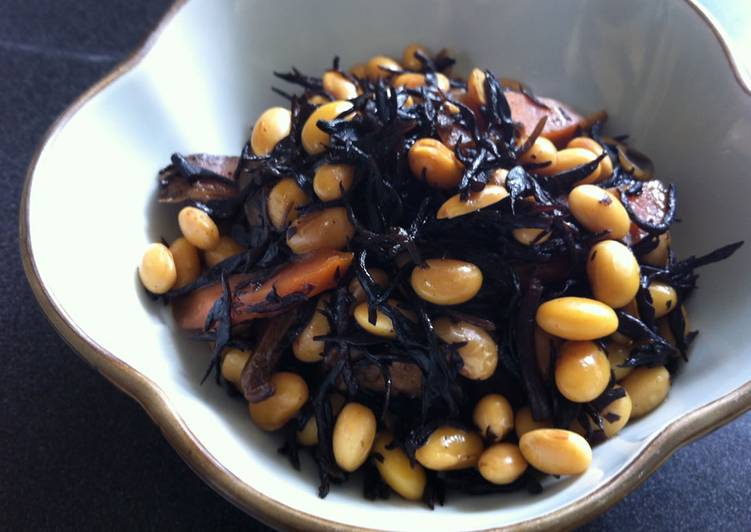Hijiki & Soy Beans Nimono. Hijiki (ヒジキ, 鹿尾菜 or 羊栖菜, hijiki) (Sargassum fusiforme, syn. Hizikia fusiformis) is a brown sea vegetable growing wild on rocky coastlines around Japan, Korea, and China. Hijiki has been a part of the Japanese diet for centuries.
 It's delicious if you make it properly.
Hijiki has a wonderful texture, and is something I like to add to soups, salads, noodles, stirfries, and more.
The iodine is especially good for those of us with low thyroid function.
You can cook Hijiki & Soy Beans Nimono using 9 ingredients and 5 steps. Here is how you achieve that.
It's delicious if you make it properly.
Hijiki has a wonderful texture, and is something I like to add to soups, salads, noodles, stirfries, and more.
The iodine is especially good for those of us with low thyroid function.
You can cook Hijiki & Soy Beans Nimono using 9 ingredients and 5 steps. Here is how you achieve that.
Ingredients of Hijiki & Soy Beans Nimono
- You need 20-25 g of Dried Hijiki.
- Prepare of Cooked Soy Beans.
- It's 1 of Carrot.
- Prepare 2-3 of Shiitake *dry or fresh.
- It's 1/2 cup of Dashi Stock *1/2 cup water & 1/3 teaspoon of dashi powder.
- It's 1/2 tablespoon of Oil.
- Prepare 1 tablespoon of Sugar.
- Prepare 1 tablespoon of Mirin.
- It's 2 tablespoons of Soy Sauce.
See all reviews. 'Hijiki' is a dark brownish coloured sea vegetable and it has been a part of the Japanese diet for centuries. Hijiki is rich in dietary fibre and minerals such as calcium, iron and magnesium. There is a health concern about the level of inorganic arsenic in Hijiki and some say it is toxic. Hijiki is a healthy and nutritious seaweed I use almost every week.
Hijiki & Soy Beans Nimono instructions
- If you use Dried Soy Beans, you need to cook them in plenty of water for 30 to 60 minutes..
- Wash Dried Hijiki and let it soak in water for 15 minutes. Cut Carrot and Shiitake into thin strips..
- Drain Hijiki and remove water very well..
- Heat Oil in a large saucepan, stirfry Carrot and Hijiki, then add Shiitake and cook for 2 to 3 minutes..
- Add Dashi Stock and seasonings, add Soy Beans, then cook at medium heat for 10 minutes covered. Remove lid and cook further 5 to 10 minutes uncovered until the liquid is almost gone..
I usually make a pot full of this simmered hijiki and store in the fridge for a couple of days. There are two types of hijiki, which are actually just different parts of the same species: "stems" (nagahijiki) and "leaves" (mehijiki). Some people find the smaller, flat, bud-like mehijiki, with its almost velvet texture and mild flavor, easier to cook with than its tougher counterpart—and, conveniently, mehijiki is also the type more readily available in Asian supermarkets here in. On this page you will find the solution to Hijiki or arame in a Japanese restaurant crossword clue crossword clue. If you have any other question or need extra help, please feel free to contact us or use the search box/calendar for any clue.